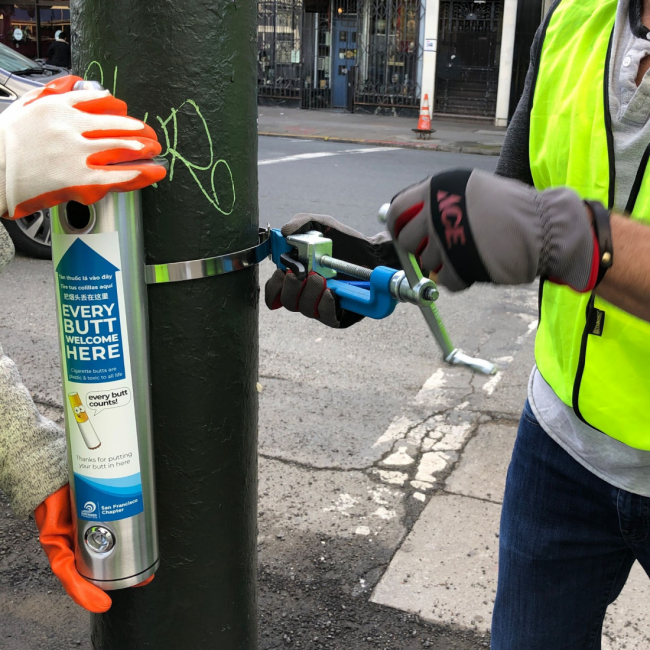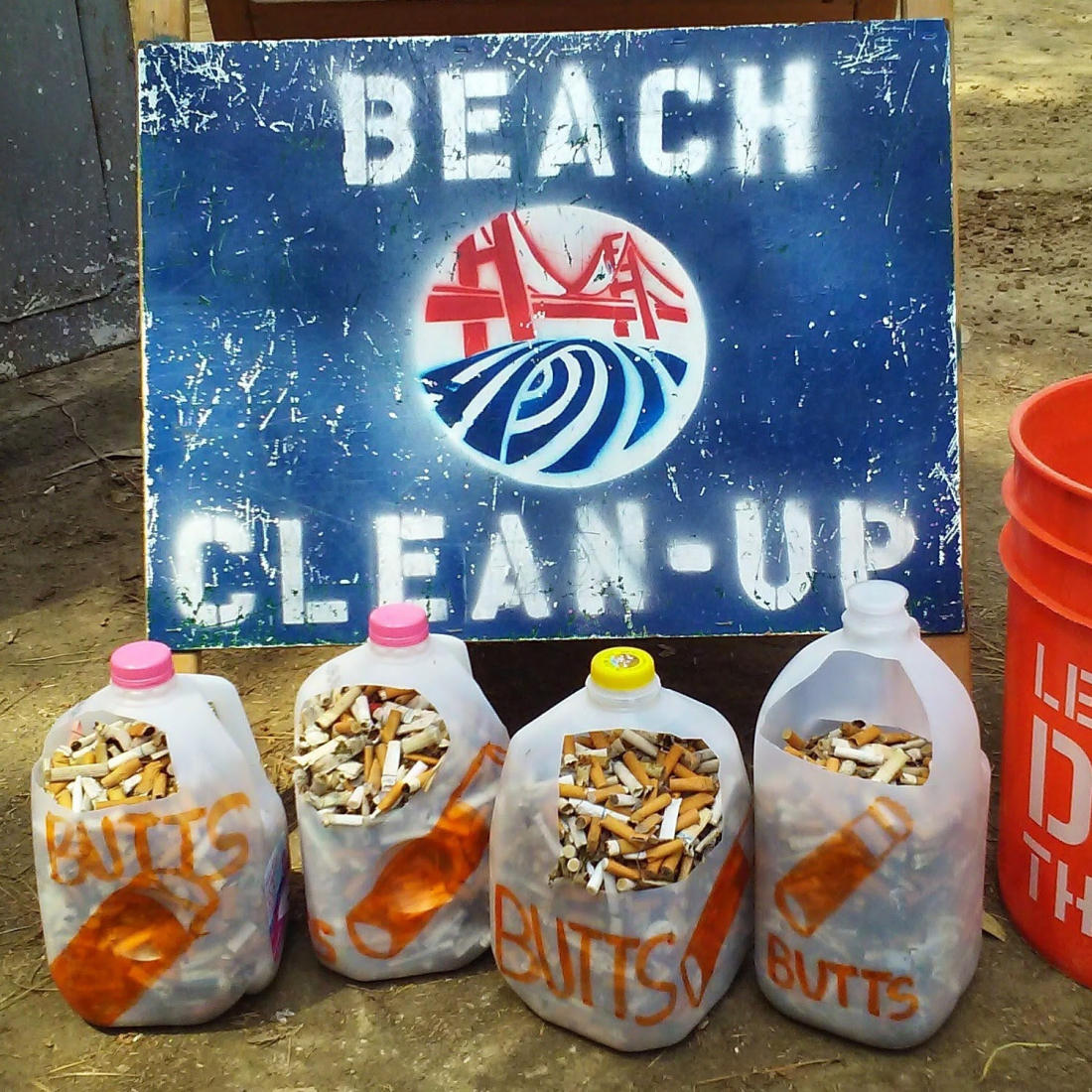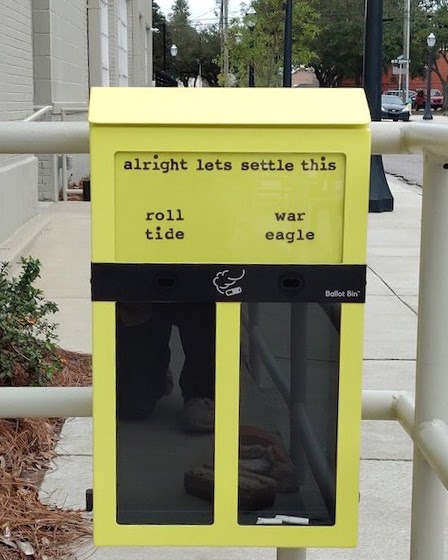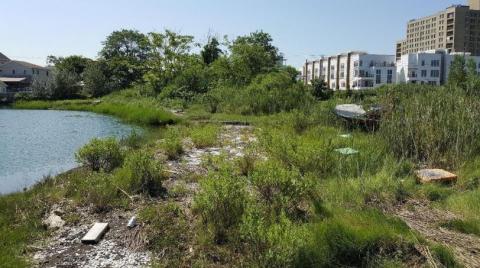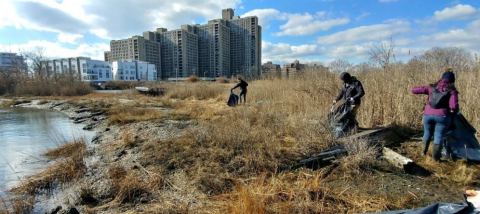This week, we’re taking a look at the different types of urban industrial pollution, how NOAA responds to pollution events and aids in the recovery of natural resources lost due to pollution, and what you can do to help keep pollution out of your waterway. Stay tuned as we explore these topics through a series of blogs.
When you think about a trip to the beach, do you picture an idyllic island somewhere far away or a city park a few feet away from a busy commercial or residential district? The coastal urban environment is an important place for people to enjoy a little bit of nature, and equally valuable for the animals and plants that make it their home. However, with people comes trash, and coastal areas close to large population centers can face a heavy burden of marine debris. The NOAA Marine Debris Program works with partners across the nation to prevent and remove marine debris in urban areas.
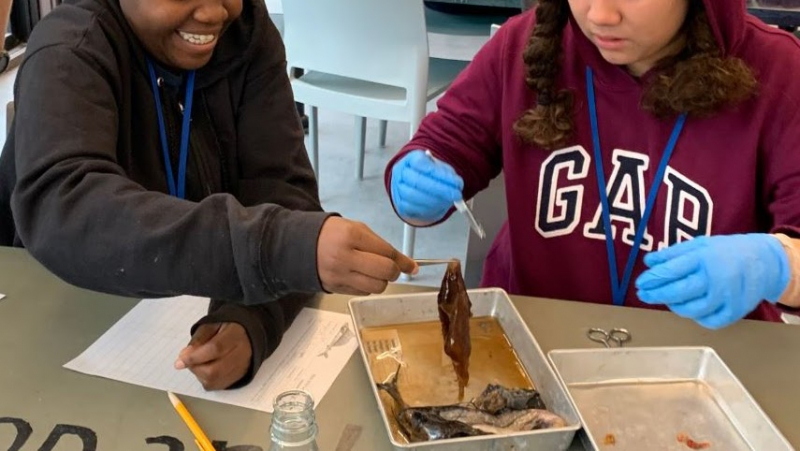
Steps from the Pacific Ocean, middle school students in San Diego, California, are studying where marine debris in their city comes from. California Sea Grant and the Ocean Discovery Institute are working with students from highly urbanized and under-resourced middle schools to better understand the sources of urban debris, identify storm drains that collect a lot of debris, and create programs that will educate students and residents about urban trash. The students are learning about how different types of city blocks, such as a residential community, commercially zoned area, or a public space, affect the creation of marine debris. Data collected through this project can inform solutions to prevent litter and marine debris.
In San Francisco, located between the Pacific Ocean and the San Francisco Bay, Surfrider Foundation volunteers found that cigarette butts were a big problem - they picked up an average of 6,500 butts at every two-hour cleanup event! Cigarette filters are made out of a plastic-like material called cellulose acetate that behaves just like plastics in the marine environment. They may break into smaller pieces, but remain in the environment as microplastic debris. By installing more than 100 new cigarette butt receptacles in hot spots, distributing 12,000 pocket ashtrays, and raising awareness about the negative impacts of butt debris, Surfrider San Francisco is working to reduce this type of common debris.
Downtown Mobile, Alabama is located on the Mobile River, very close to Mobile Bay. Litter from downtown Mobile is not only unsightly, hurting the tourism industry and local economy, but can also travel downstream to contaminate Mobile Bay. Mobile Baykeeper and Plastic Free Gulf Coast are helping the City of Mobile, the Downtown Mobile Alliance, and area businesses go plastic-free by switching to reusable and/or biodegradable products, and encouraging shoppers and visitors to learn how to reduce their own contributions to marine debris. This will help to reduce the amount of trash produced in the area that may end up in the environment.
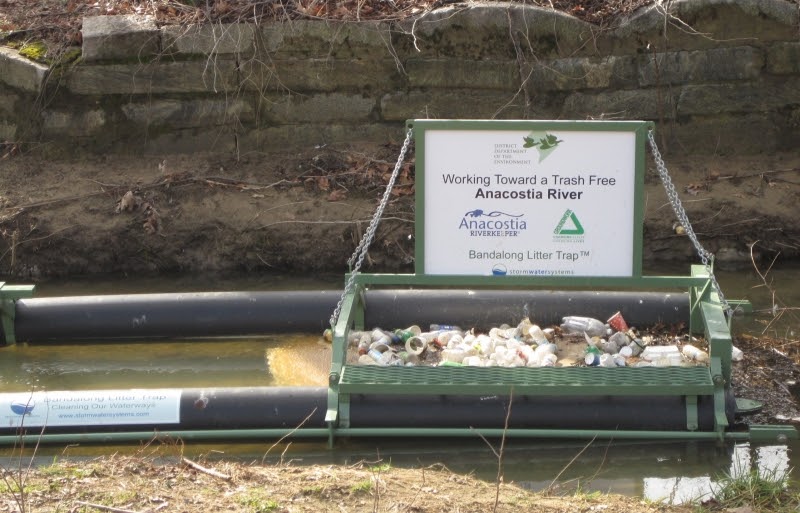
The Anacostia River runs through Prince George’s County and the Washington, D.C. metropolitan area, receiving hundreds of tons of trash each year that flows down into the Potomac River and eventually to the Chesapeake Bay. Prince George’s County has installed two floating litter traps to remove the debris before it travels farther down river. The County is now monitoring the traps to assess the effectiveness of this removal approach, and is increasing public awareness of the issue through local outreach and education programs.
Two projects in New York state are engaging volunteers to learn about and remove marine debris in urban areas. In the Niagara River and Lake Erie watershed, Buffalo Niagara Waterkeeper is mobilizing more than 500 volunteers to remove approximately two tons of debris floating in the water through kayak and shoreline cleanups. On the other side of the state, the New York City Department of Parks and Recreation is removing derelict vessels and coordinating volunteers to clean up smaller marine debris items from the shore of Jamaica Bay in Queens.
Across the country, people and organizations are working to prevent and remove marine debris in coastal urban environments. As we all look forward to getting outside this summer, remember to also think about how to protect these areas we all love and enjoy.

